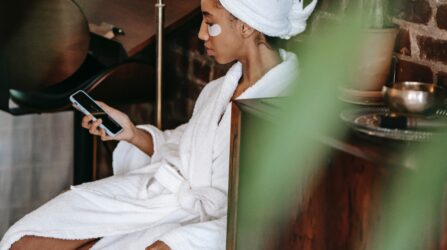
If you haven’t read our initial introduction to holistic health, check that out here. We are taking you through a basic guide to the holistic approach to health, and as previously mentioned in our other post, the approach can be broken up into five areas or aspects:
Having a balance of all five of these things is how we achieve out optimal health. So, how do we start with the physical aspect?
Our physical health is very important and is tied to the other aspects of ourselves. Often, a fall in our emotional or mental state can make us feel physically unwell. It is the physical symptoms that we first notice, that we take as signs of bad health.
So, taking care of our physical aspect is important, both what we do with our bodies, and what we put into them.
Generally speaking, it’s the usual suspects we consider with our health.
Sleeping is hugely important and we should be getting eight hours of it a night. Disruptive sleep patterns can affect us physically and mentally, from fatigue and discoordination to memory loss and emotional instability. Sleep reduces stress and inflammation, keeps our heart and brain healthy and boosts both immunity and mental wellbeing.
Boring, but necessary. Everything we put into our body matters, so ensuring we drink plenty of water, eat a good, balanced diet and avoid excessive consumption of alcohol and hydrogenated fats is essential. Eating your greens really does matter. Alongside this, taking vitamins or supplements, drinking herbal teas or tonics can also help to keep both your body and wellbeing in good health. Take green tea, for instance, which has benefits all round. Check out more about a holistic diet here and more about herbal teas here.
It is recommended that we move our bodies for at least thirty minutes a day. Whether you hit the gym, swim, personal training, martial arts; or if you prefer a long walk, yoga or Pilates, finding an exercise routine that you enjoy has long term benefits for your overall health.
It might seem unnecessary to mention, but hygiene is often overlooked when it comes to health. As well as brushing your teeth and showering regularly, hygiene also means things like going the dentist. The word itself means: ‘conditions or practices conducive to maintaining health and preventing disease, especially through cleanliness’. Personal hygiene is also great for our mood, helping with mental illnesses such as depression. For instance, a bath is as good for your mental wellbeing as exercise. On top of that, proper maintenance of your body, your skin, teeth, eyes, the lot, helps to prevent diseases and illnesses. Washing your hands, as we all know, is vital.
We often associate relaxation with our mental aspects, but the physical side is important too. When we are stressed, tension builds up and we suffer with headaches, back pain, muscle pain, fatigue or trouble sleeping and eating. Making sure that our bodies are relaxed, from hot baths, massages, good sleep or even the calming sensation of having someone brush your hair, is important for our health in all aspects.
Within this scope of things that we do to keep our bodies healthy, and commonly thought of in regard to the holistic approach, are several alternative healthcare practices.
I mentioned the tea above, but we also find practices including herbalism, acupuncture, reiki (energy work) or alternative medicine routes such as Chinese medicine.
The fact is, is that the holistic approach to maintaining our physical health can encompass any of these things. You can eat vegan, do karate and drink green tea; or eat meat, go surfing and visit a chiropractor on a regular basis. So long as we look after these physical sides of ourselves, we can keep this aspect healthy and in balance with the others. If nothing else, when the balance shifts, as it will do, at least our bodies will able to cope with that gets thrown at them.
If you want to know even more about the physical aspect of holistic health read our post on the 1st pillar here!

-


Dr Singh is the Medical Director of the Indiana Sleep Center. His research and clinical practice focuses on the myriad of sleep.

The role of hormones in perimenopause Throughout your menstrual cycle, you experience normal hormonal fluctuations that are responsible for proper bodily functions like ovulation and menstruation. However, once you enter perimenopause, your hormone fluctuations change. As ovaries become less responsive

What is PMS fatigue? Have you ever wondered, “Why am I so tired before my period?” If you have, you’re not alone. Around 80% of women say that they experience some PMS symptoms, including having low energy before period onset,

Understanding PMS symptoms without menstruation Before we proceed with explanations, we wanted to clarify why having PMS symptoms is not the same as being diagnosed with PMS. As we’ve already mentioned, PMS stands for premenstrual syndrome. This syndrome is diagnosed
Privacy Overview
| Cookie | Duration | Description |
|---|---|---|
| cookielawinfo-checkbox-analytics | 11 months | This cookie is set by GDPR Cookie Consent plugin. The cookie is used to store the user consent for the cookies in the category "Analytics". |
| cookielawinfo-checkbox-functional | 11 months | The cookie is set by GDPR cookie consent to record the user consent for the cookies in the category "Functional". |
| cookielawinfo-checkbox-necessary | 11 months | This cookie is set by GDPR Cookie Consent plugin. The cookies is used to store the user consent for the cookies in the category "Necessary". |
| cookielawinfo-checkbox-others | 11 months | This cookie is set by GDPR Cookie Consent plugin. The cookie is used to store the user consent for the cookies in the category "Other. |
| cookielawinfo-checkbox-performance | 11 months | This cookie is set by GDPR Cookie Consent plugin. The cookie is used to store the user consent for the cookies in the category "Performance". |
| viewed_cookie_policy | 11 months | The cookie is set by the GDPR Cookie Consent plugin and is used to store whether or not user has consented to the use of cookies. It does not store any personal data. |
